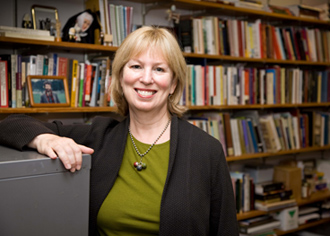Amalgamation, North and SouthPosted in Articles, Census/Demographics, Media Archive, Slavery, United States on 2013-05-13 02:32Z by Steven |
Sacramento Daily Union
Volume 24, Number 3619 (1862-11-03)
page 4, column 2
Source: California Digital Newspaper Collection
Driven from every other position by the force of argument or the force of facts, the advocates of a doomed system flourish before the eyes of the ignorant the bugbear of amalgamation. Amalgamation, they urge, is the natural result of entertaining sentiments hostile to slavery. The Marysville Express returns to the charge, quoting that eminent statistician, Voorhees of Indiana, to show that in proportion to the negro population of the North there is at the present time a frightful excess of quadroons, mulattoes and octoroons in the free States over the slave States. “Voorhees proved,” says the Express, “by reference to these unerring statistics [these of the census], that in 1860 the number of mixed bloods was much greater in the free States than in 1850, in proportion to the unmixed black population–thus showing that as abolitionism has grown in the North, this evil of amalgamation has increased. Another remarkable but disgusting fact accounts for the larger proportion of mixed bloods in our section, and that is, the by no means uncommon cohabitation of negro men with white women in the strong Abolition communities. This the census also shows. The same census returns show that such an occurrence is exceedingly rare in the slave States—a very few instances being reported. These are facts that cannot be denied. In addition to such authority, we have proof furnished by the papers and correspondents from the East, that the amalgamation theories of the Abolitionists are rapidly becoming practicalized. Marriage and cohabitation have become so common in New York and Boston as scarcely to attract attention, except as the astounding fact occasionally breaks upon one, that there are whole blocks and rows of houses with ‘every tenement occupied by families the head of each of which is, the one black and the other white!’ That there are also mixed bloods in the slave States is a fact, and a deplorable one. But the evil can never become so corrupting where the two races occupy the relative positions that slavery fixes.”
We have seen no census returns in which the number of quadroons, mulattoes and octoroons in the Northern States has been given, with a division according to the shade of complexion. Those having African blood in their veins are generally, if not always, returned in the census as “colored persons.” Perhaps Voorhees had access to statistics that have not yet reached the public in the form of an authorized publication. But, however that may be, an increase of the mixed breeds in the North cannot be more justly attributed to the growth of “Abolitionism” than to the growth of the railroad interest or the progress of common schools. The Express, to establish the preposition, must first show that none but Abolitionists in the North practice amalgamation, and then prove that there is no amalgamation in the South, where abolitionism is held in abhorrence. Now, in regard to the Northern cities, it is quite true that in what ore sometimes called the “infected districts” of New York, Boston and Philadelphia, whites and blacks are sometimes found living together in loathsome habitations; but these districts are the “nurseries of Democracy.” Amid all the changes of opinion that have come over the respectable portion of the community, those sections of the great cities in which practical amalgamation may be observed, invariably give large majorities for the ticket labeled “Democratic.” What then? Does it follow that Democracy leads to amalgamation? Yet that inference is quite as legitimate as the one drawn by the Express. When the Express asserts that “Marriage and cohabitation (of the two races) have become so common in New York and Boston as scarcely to attract attention, except as the astounding fact occasionally breaks upon one that there are whole blocks and rows of houses with every tenement occupied by families the head of each of which is, one black and the other white,” it either willfully misrepresents the state of the case or else it has been egregiously gulled. Nowhere in the United States is the prejudice against the negro race more general and intense than it is in the city of New York. The simple appearance of a black man and white woman, arm in arm, on Broadway, would provoke a riotous demonstration. It is only in the by ways of the metropolis, and among the very dregs of society, that a case of amalgamation can be found; and.in every case, rum and vice, not hostility to slavery, explain the association.
The Express admits the existence of amalgamate in the South. Logically, then, if the mixture of the races be such a disgusting evil, the Express should condemn the institution of slavery, which brings the races into such intimate association. “But the evil can never become so corrupting where the two races occupy the relative positions that slavery fixes.” Why not? In the language of a recent candidate for office in this State, “the blood of the chivalry flows through the veins of a half million slaves on Southern plantations.” Does the fact of men holding and selling as chattels those who share their own lifeblood, palliate or darken the offense of amalgamation? Among men of right feeling and intelligence there can be but one answer. Mongrelism pervades the South, and the emancipation policy of the Administration, instead of stimulating the evil, will rather tend to check its extension by arousing that prejudice of race which is the true safeguard of Caucasian purity. The prevailing sentiment of the North is well interpreted by Orestes A. Brownson, as “anti-slavery, but anti-negro.”



